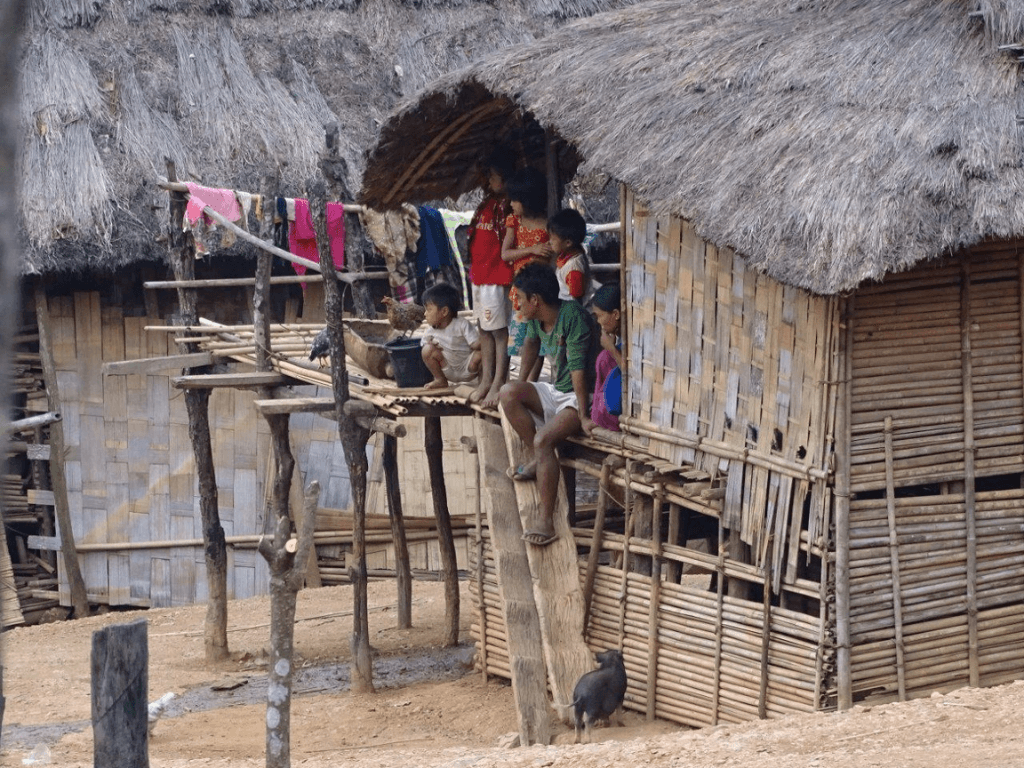
In the summer of 2015, I stumbled across a piece of writing entitled ‘From Mt. Victoria to Mrauk Oo’. My first thought was ‘Wow!’, and then I started reading. The introduction was promising – it described a journey that I would love to take myself. But the itinerary was somewhat confusing: Why did they choose to travel all the way back to Ayeyarwady from the Chin Mountains and then, from there, cross the Rakhine Mountains to Mrauk Oo? I was convinced there had to be another way. I soon found myself with the receiver in my hand, dialling the number for Khai, our guide in Mindat who had accompanied us on our tour of Mount Victoria in April 2012.
Khai immediately had several suggestions for us. Because we wanted to take our three daughters with us, he recommended that we take the easier route via Matupi. Matupi? The place wasn’t even marked on my map. Over the following weeks, however, I was to learn a great deal more about Matupi, located 102 kilometres (about 7 or 8 hours by car) to the northwest of Mindat.
On 12 April 2016, we flew from Yangon to Bagan – which was once the most important temple and pagoda city in Southeast Asia – on the eastern bank of the Ayeyarwady River. In Bagan, thousands of decaying pagodas rise majestically from the plains to create a timeless spectacle that recalls their glorious past. We enjoyed a traditional breakfast for the region: rice, a variety of curries and countless side dishes – which, in the intervening years, has become a tradition in our family – before departing Bagan. We crossed the Ayeyarwady and passed through Pakokku, where we followed a highly atmospheric ceremonial Shin Pyu procession. Afterwards, we struggled for hours through dusty plains before reaching a steep uphill section of the road in the late afternoon. We began to climb the Chin Mountains and headed towards Mindat, a former British mountain outpost 1,481 metres above sea level in southern Chin. Once there, we spent the night at the Oasis Resort, which is located directly at the town boundary in a small forest of pines. After our long day, we enjoyed the stillness, the fragrance of the pines surrounding us, and the mountain view.
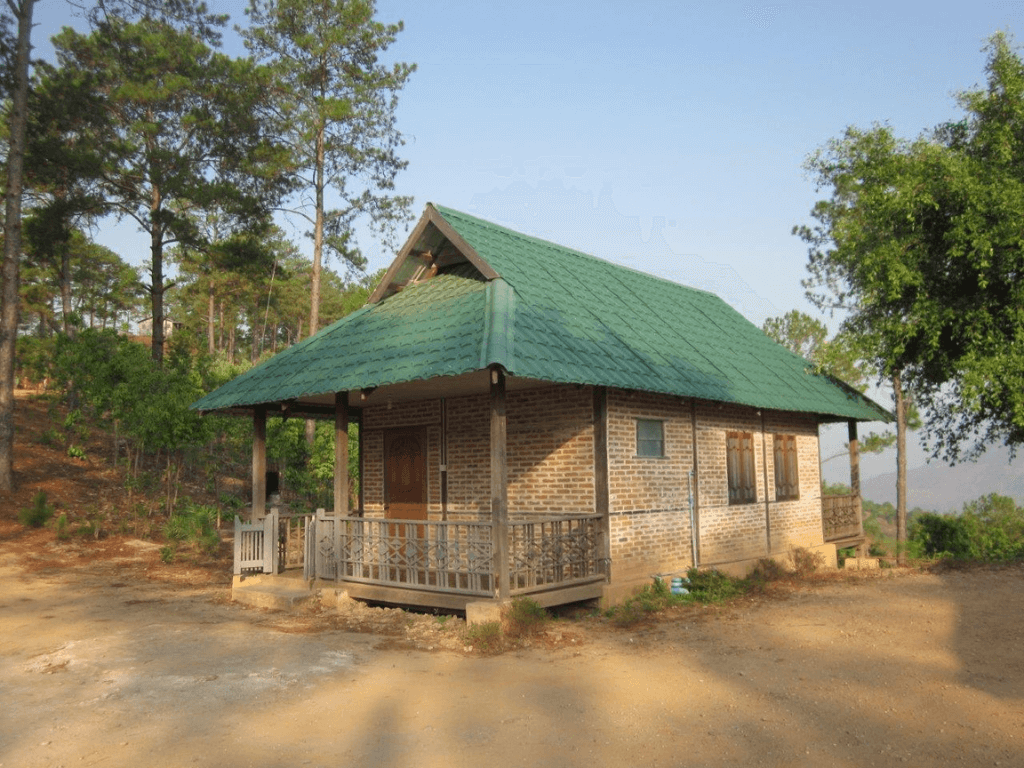
In the early morning, we were rudely awakened by the sound of birds. Following a hearty breakfast, we visited the market in Mindat, where Shwe Yee took the opportunity to make some final purchases, then set off on our way to Matupi. Most of the time, the winding road through Nat Ma Taung National Park was in good condition. The 772 square kilometres of the park extend from Mindat to the cities of Kanpetlet and Matupi. Our journey took us through rolling evergreen forests; humid, elevated deciduous and pine woodlands; and hilly grass-covered steppes. Along the way, we were constantly treated to captivating vistas of countless red and white rhododendrons. We saw colourful birds and observed a wildcat gracefully lope up a green hill, pause for a moment at the top and look back at us, then disappear before our eyes. We visited a shaman and sat with him by the fire as he told us stories, marvelled at the various objects around us and, upon leaving the hut, took a closer look at the animal skulls decorating the entire wall from top to bottom in long columns.
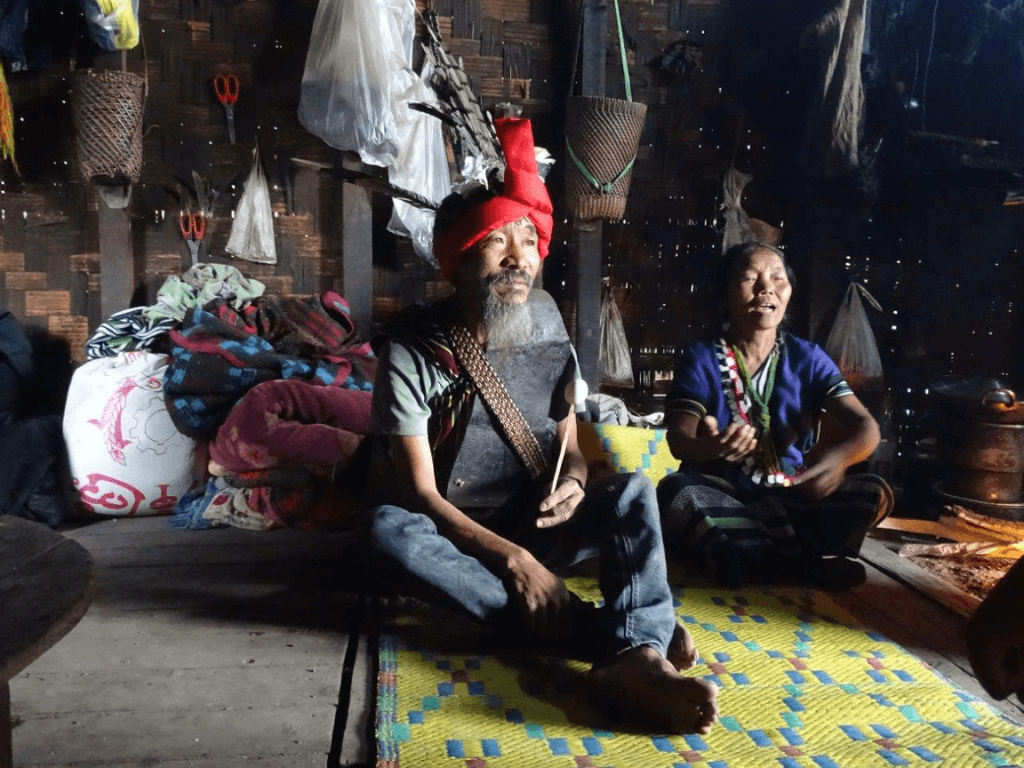
By the afternoon, we had left Mount Mobi behind us (which, at around 3,100 metres above sea level, is the second-highest mountain in Chin State) before crossing Lay Mro River and continuing on to Matupi (1,085 metres above sea level). At this point, dark clouds had gathered above the ridge of the mountains, and it started to rain.
We spent the night in Matupi at the Grace Guest House, a two-storey building located directly on the street. While the simple bedrooms were on the upper storey, the communal bathrooms were in the basement. I’d prefer not to describe the rooms and sanitary facilities – suffice to say that none of us had any desire to go down into the cellar in the middle of the night. To solve this problem, we bought ourselves plastic chamber-pots on a later excursion; each of us had a bucket in our favourite colour.
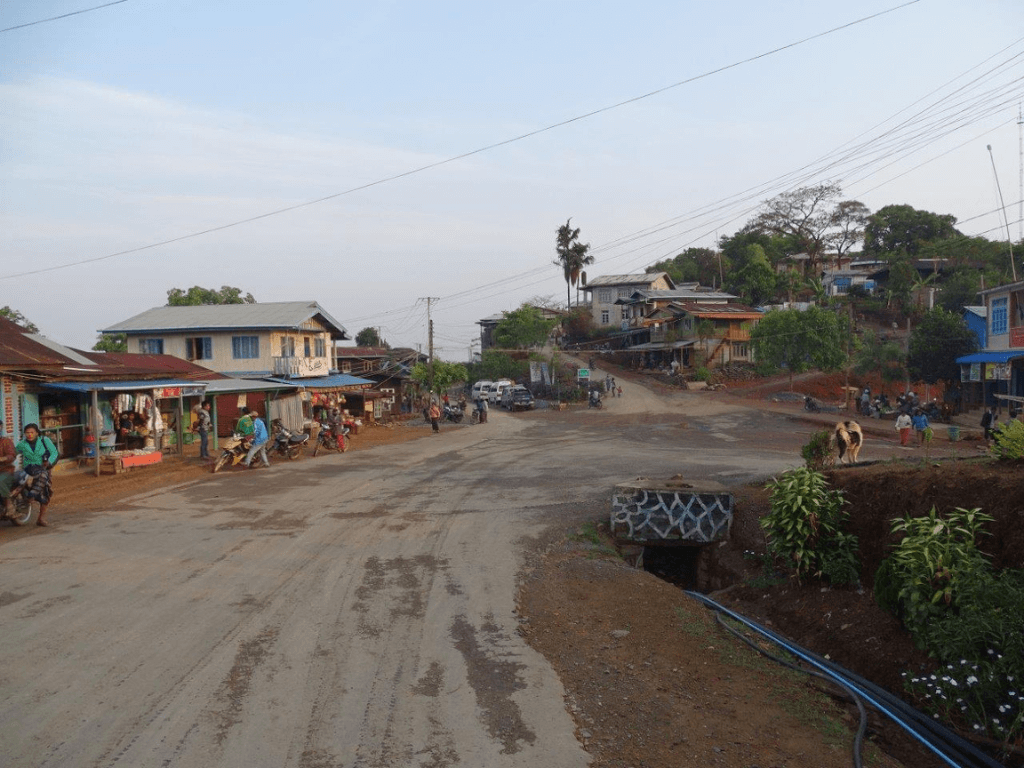
I didn’t sleep well. The bed was too short for my six-foot frame, meaning I was unable to stretch my legs and lay cramped on the thin mattress in the shape of a question mark. And because the hotel was situated directly on the street, I could hear every single vehicle that passed by in the night.
What a night! I was grateful when the first glimmers of dawn appeared in our room. We rushed to get ready and gathered in front of our rooms, each of us with a chamber-pot in hand. What a sight! We were shaking with laughter.
After breakfasting in a local tearoom across the street from the hotel, we returned to the car and left Matupi, travelling west. After about an hour, we reached the trailhead for our hike through the Chin Mountains to the Lay Mro River. We needed to cover about 17 kilometres on foot by the end of the day. We were glad to finally be out walking. Filled with exhilaration, we set off on a gravel path that went downhill towards Amswe Ga and, on the other side, back up to Amswe Ka, another typical Chin village. After hiking for two hours under the heat of the sun, our legs were tired and our water bottles empty, so we were looking forward to taking a break for lunch.
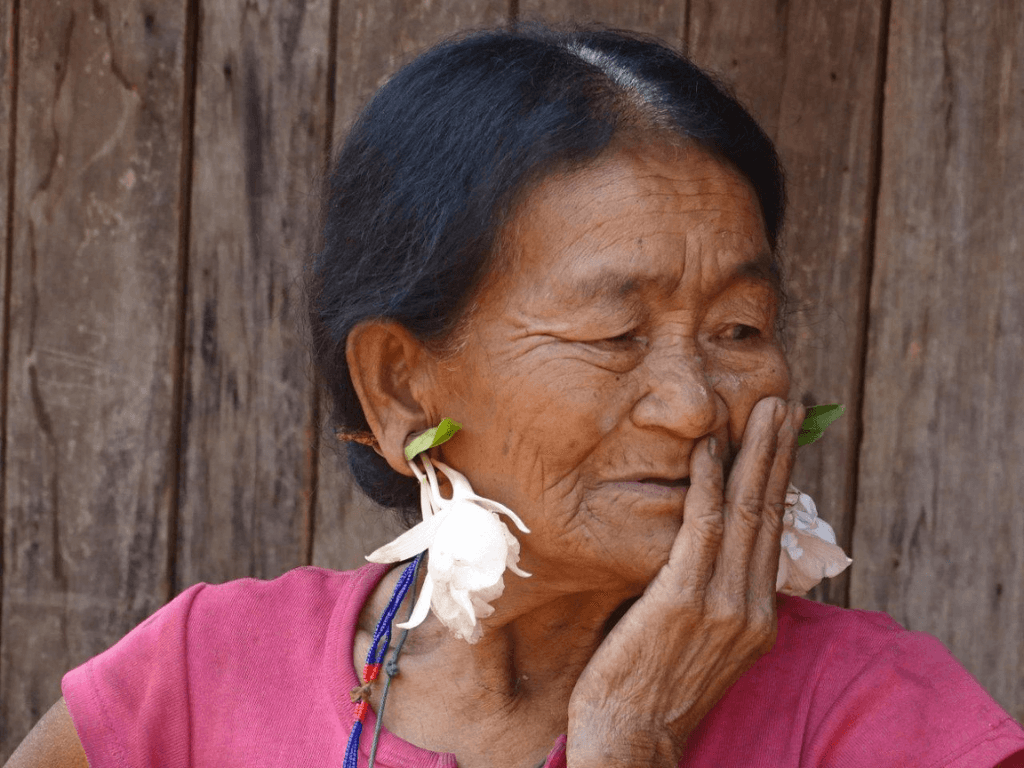
But we had to wait for nearly two whole hours before we could eat: Instead of being freshly prepared in the village, the food was in Matupi (where Khai’s wife had cooked for us), and someone needed to go pick it up by motorbike. However, she was an excellent cook – soup, rice, hot-and-sour chicken and plenty of vegetables. We wolfed it down!
Around 3 o’clock, we set off again, following the path through dense woods full of various orchids, birds and squirrels. The rain started around 5:30 PM – only a drizzle at first, but soon enough a downpour. Luckily, we had purchased ponchos in Matupi. We trudged through the deluge as it got darker and darker, not reaching the village of Gwe Zar until 7 p.m.
Though the inhabitants of Gwe Zar had expected us at 4 p.m., they would likely still have been waiting for us at the edge of the village if the storm hadn’t prevented them from doing so.
After dinner, the special occasion of our visit prompted a mug of khaung-yay, a traditional Chin beer brewed from sorghum. We all had a chance to taste it, and our lively conversation lasted well into the evening.
This second, equally unrestful night ended at 6 a.m. At my age, my bones are simply no longer capable of sleeping on the ground. All night, I tossed and turned, but was only able to relieve the pain for a few moments.
Our breakfast was a noodle soup with egg and lentils, rice, and dried beef from the mithun, or mithan, a unique species of cattle that is native to the Chin Mountains.
We spent some time watching the village inhabitants go about their early-morning business before setting off again. Our trek through dense, lush forest was relaxed; after about two hours, we reached the Dai village of Mardu, 1,284 metres above sea level. We ate lunch and took an extended nap there.
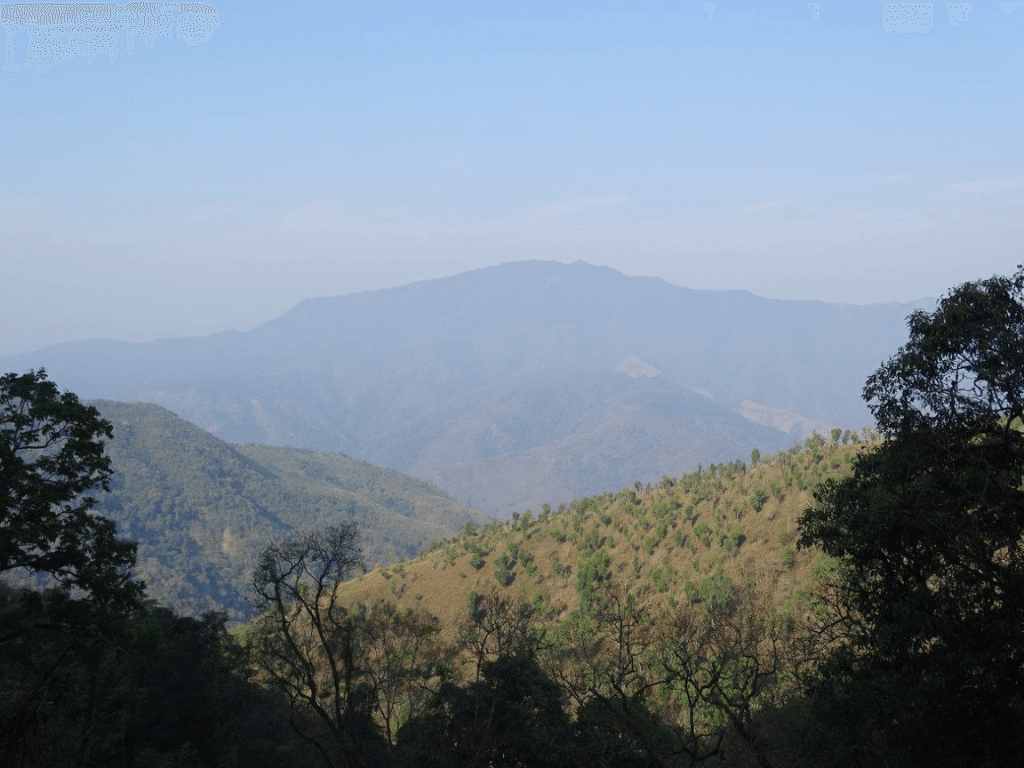
In the afternoon, we left the gravel path behind and followed a narrow footpath. Leaving the village behind us, we passed bamboo plantations, rice paddies and open fields. We arrived in the village of We Lu in the late afternoon and spent the night here. We rinsed off the dust and sweat in a creek supplied with clear, cool water by three pipes. Then we sat on the balcony, enjoyed the fantastic view of the Chin Mountains, and chatted with our hosts.
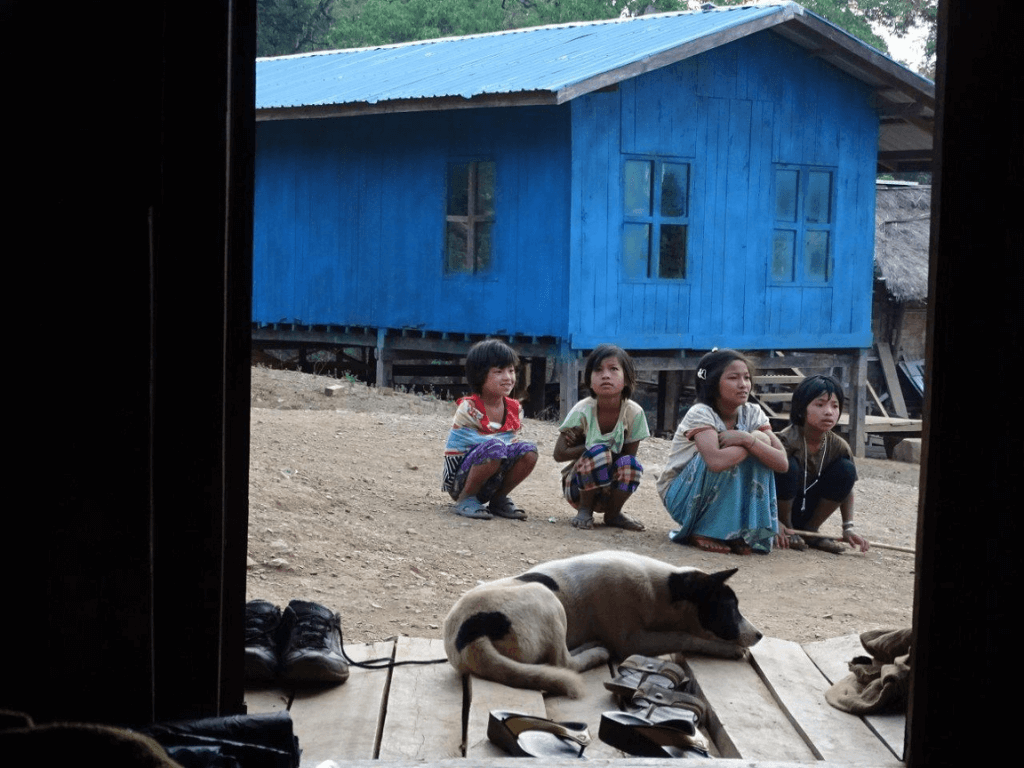
After dinner, we were led to the athletics fields, where traditional dances were performed in our honour. The whole village had gathered there. People seemed to gaze at us with open curiosity, and we really felt as if we were the first outsiders to ever spend the night there. Hesitant at first, but with increasing confidence, people of all ages came up to us and shook our hands. I’ve never shaken that many hands at once in my whole life.
In the kitchen below our bedrooms, the day began early, at 4 a.m. We got up shortly after 5 o’clock, hoovered up our breakfast – soup and stir-fried noodles with chicken – and were on our way again. The path took us uphill through a dense forest, followed by scrub and groves of bamboo, past freshly harvested fields and again through thick woods until we reached Htin Khaung (930 metres above sea level). This beautiful Chin village consists of numerous traditional Chin storehouses, a picturesque village square and a church. We saw Chin women whose faces were adorned with the delicate traditional tattoos that were once typical of the Chin. According to traditional lore, this practice originated in the idea that tattooed women would be ‘too bizarre’ for Bagan kings to kidnap.
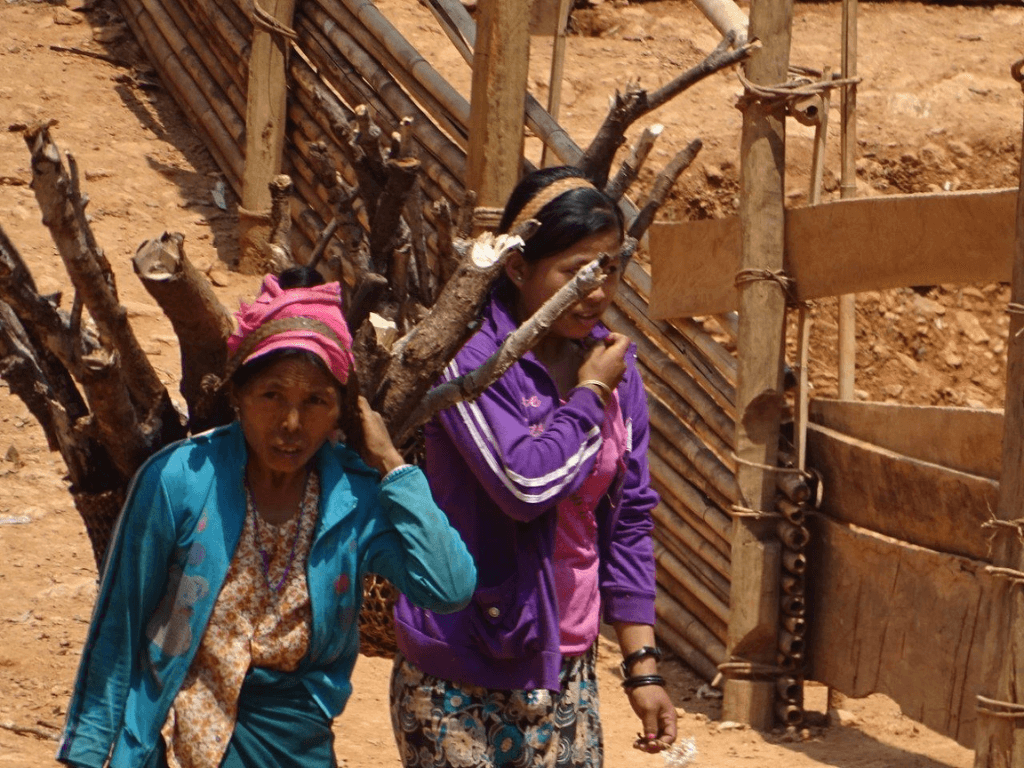
We whiled away the time and didn’t set off again until around 1 p.m. The next two hours were hard. The path was constantly uphill, and there was little shade along the way, so the sun beat down on us mercilessly. Then a storm broke over our heads and it began to pour as we struggled against the cold wind. Fortunately, the gale was over just as quickly as it had begun. Around 5 p.m., we arrived in Lon Ton, a small village made up of a few simple bamboo huts. The curious eyes of the inhabitants followed us from behind closed windows and doors. At the other end of the village, near the church, we were nonetheless greeted by a small group of people who accompanied us to the new village, Lone Ton, where we spent the night.
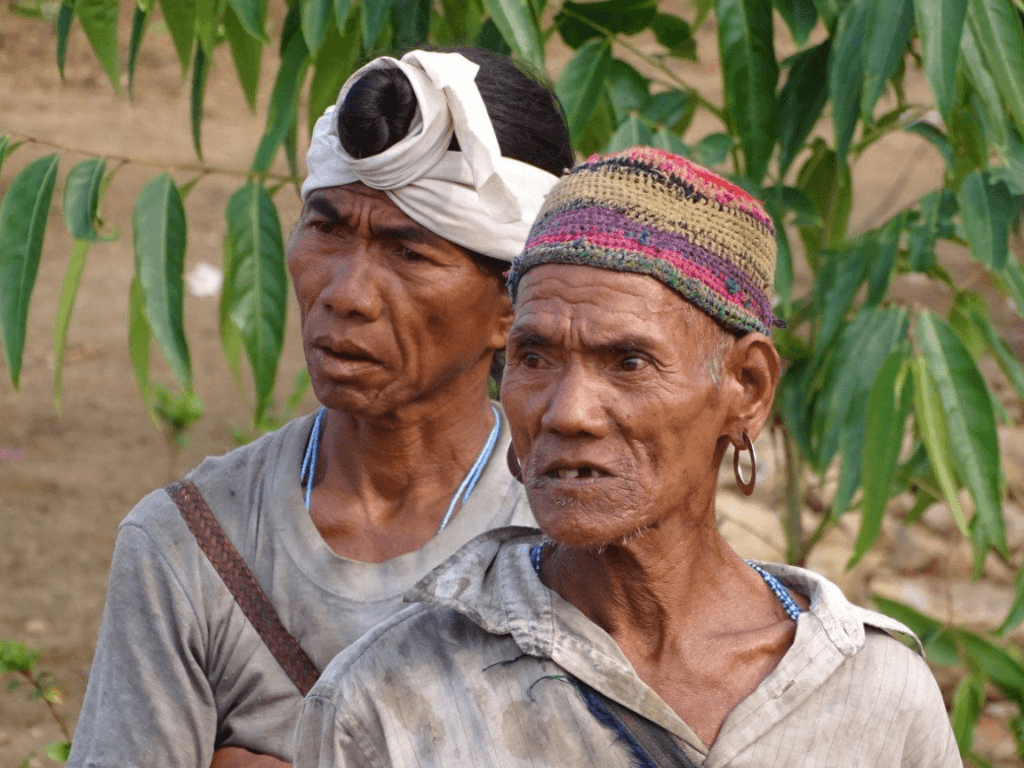
Dinner that night was extraordinary. We enjoyed a flavourful soup, rice, vegetables, fish and potatoes with venison. Yet again, the entire village turned out to see us in the evening. Shwe Yee gave a short speech thanking them for their hospitality, then we danced and laughed to the sound of traditional music. It was already midnight by the time we went to bed.
After a slow morning, we said goodbye to our hosts and began the long descent to the Lay Mro River. A few families came along with us initially, but left us on our own again once they reached their fields, where they remained to work for the day. The landscapes we passed were gorgeous. We had a spring in our step as we descended through bamboo forests, coming to the Lay Mro around 11 a.m. However, our boat was nowhere to be seen. So we sat beneath the shade of a tree and took the opportunity to have a picnic and refreshing dip in the clear waters of the Lay Mro.
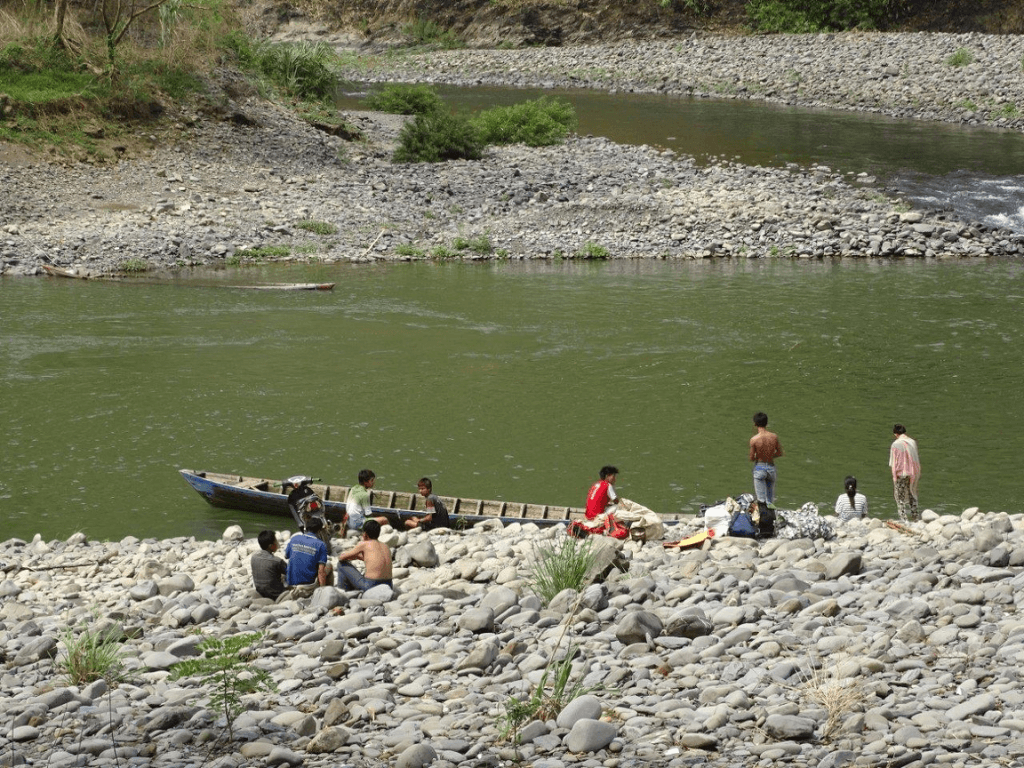
Around 12:30, we heard the sound of a rapidly approaching motor, and the boat arrived soon after. Relieved, we packed up our things, stowed everything away and were soon ready for the second half of our journey.
Over the next few hours, we travelled downriver through the Chin Mountains. Our speed was generally languorous, which gave us plenty of time to look around at the fascinating river landscape around us. Still, we continually passed through tumultuous rapids, where we held our breath and were astonished at the skill of our two-man crew in manoeuvring the boat through the shoals. It was truly all hands on deck, as the water level was very low in April, at the end of the dry season. Again and again, they jumped out of the boat, pulled and pushed us through the shallows, leapt back into the boat and quickly and skilfully plunged in their long bamboo oars in order to change the direction of the boat as needed to avoid oncoming rocks. We continued downriver. An astonishing variety of flora and fauna passed us by – we were able to see hornbills, many different species of kingfisher, herons, common sandpipers, monitor lizards and monkeys. Around 6 p.m., we moored the boat in the traditional Dai village of Home, totally overwhelmed by all that we had experienced that day.
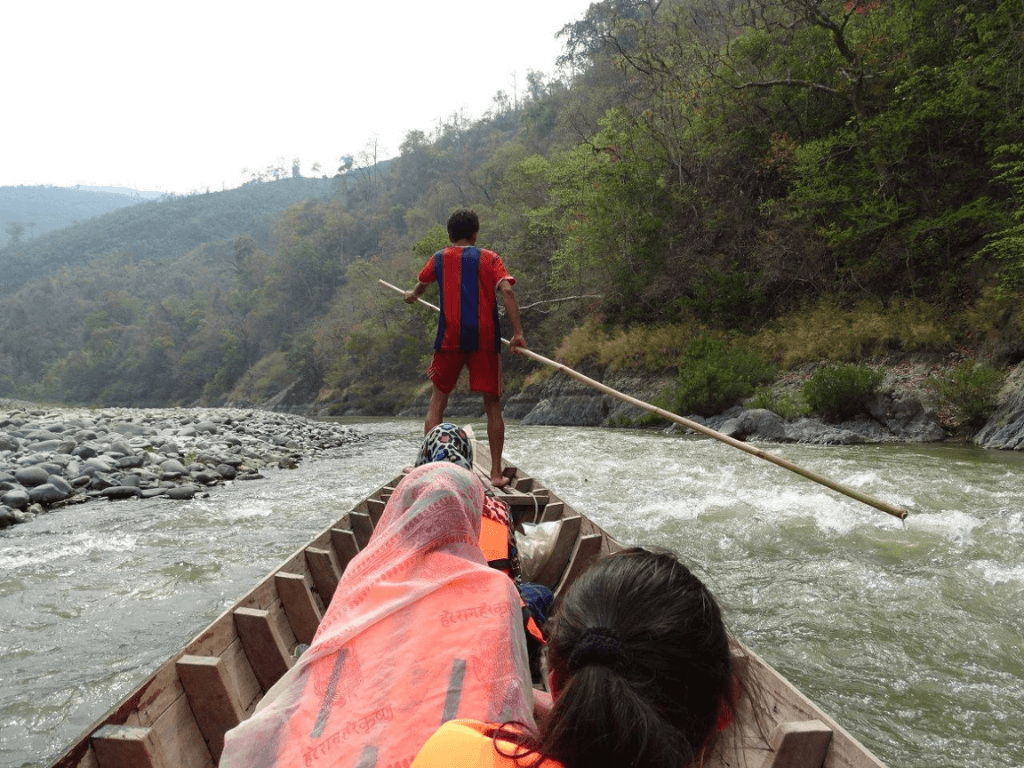
The next day, we had the luxury of going a bit more slowly, as we only needed about six hours to cover the ground we’d planned. That meant we could take a stroll through the town after breakfast and enjoy watching people’s early-morning activities. We also visited the mother of our host, a 58-year-old woman whose face was completely covered in blue tattoos down to her thin lips – even her eyelids. She wore her hair scraped smoothly back. She wore no earrings, but distended holes in her lobes indicated that she had worn heavy jewellery in the past.
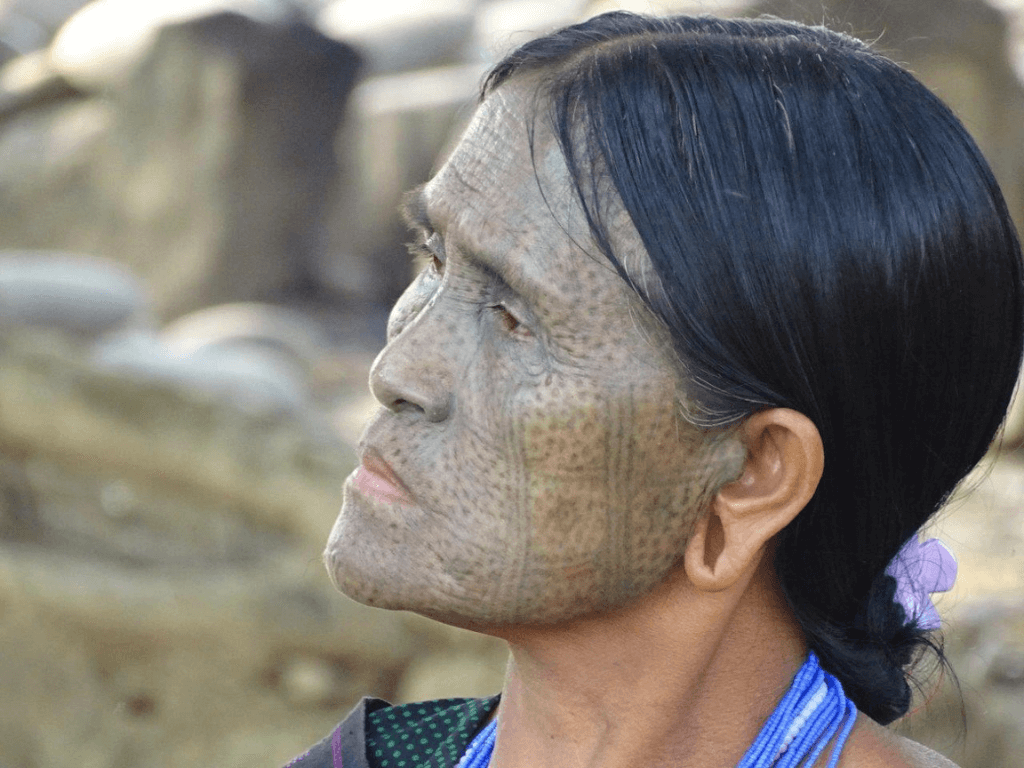
The time flew by and we didn’t set off again until 9:30 a.m. We continued downstream through the Chin Mountains, which were gradually becoming less and less dramatic in height. Over the next few hours, we again navigated through rapids and were even forced to disembark at one point and walk on foot for quite some time. Around midday, Shwe Yee discovered an area of high ground with a giant tree on one bank of the river – the perfect spot for a picnic. We lay down, watching the river contemplatively, and Shwe Yee and Hnin Phyu Lay took the opportunity to go swimming.
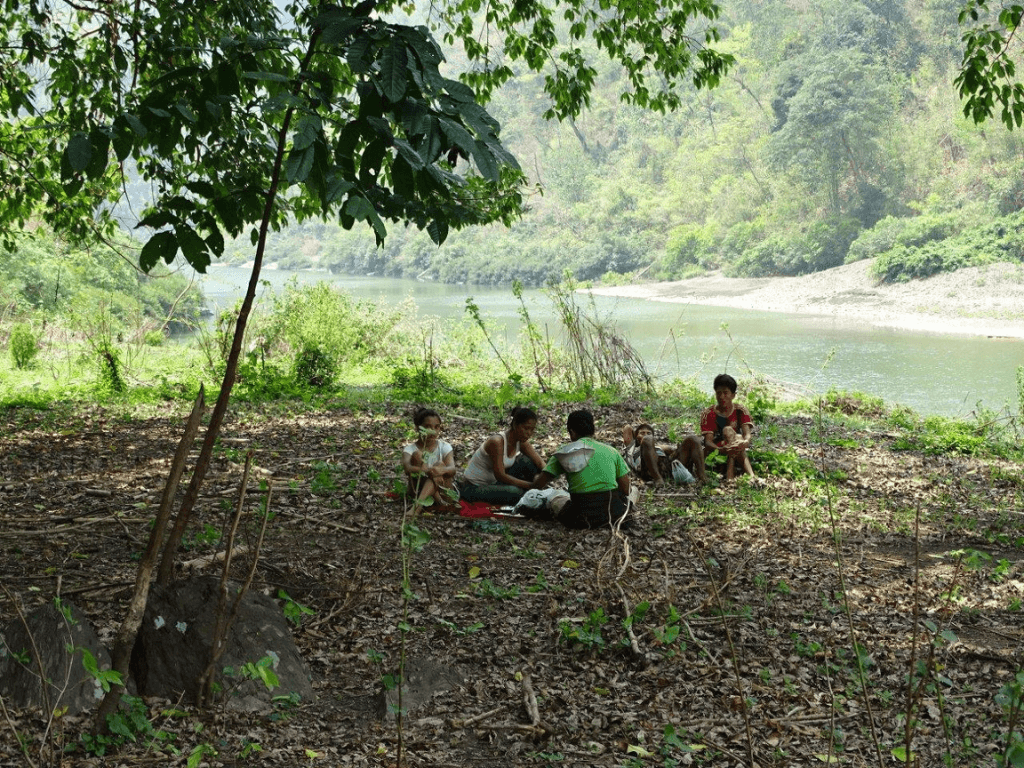
The river grew wider and more placid over the course of the afternoon. We visited the village of Daung before reaching the Lai Tu region. The Lai Tu Chin people are descendants of Tibetan-Burmese settlers along the banks of the Lay Mro. In many of the 53 Chin tribes, women tattoo their faces – but the Lai Tu are particularly easy to recognise for their unmistakable cobweb-like patterns.
It was already dark by the time we finally berthed in Landau. Landau is the administrative seat of the Lay Mro region; in addition to a school, it also has a medical clinic and police station (where we had to report our presence and register).
The people living there were very friendly and helpful. They made every effort to make our stay as comfortable as possible and provided us with such a delicious feast that, to this day, my mouth still waters when I think of it. It was simply fantastic – the best food that we experienced the whole trip.
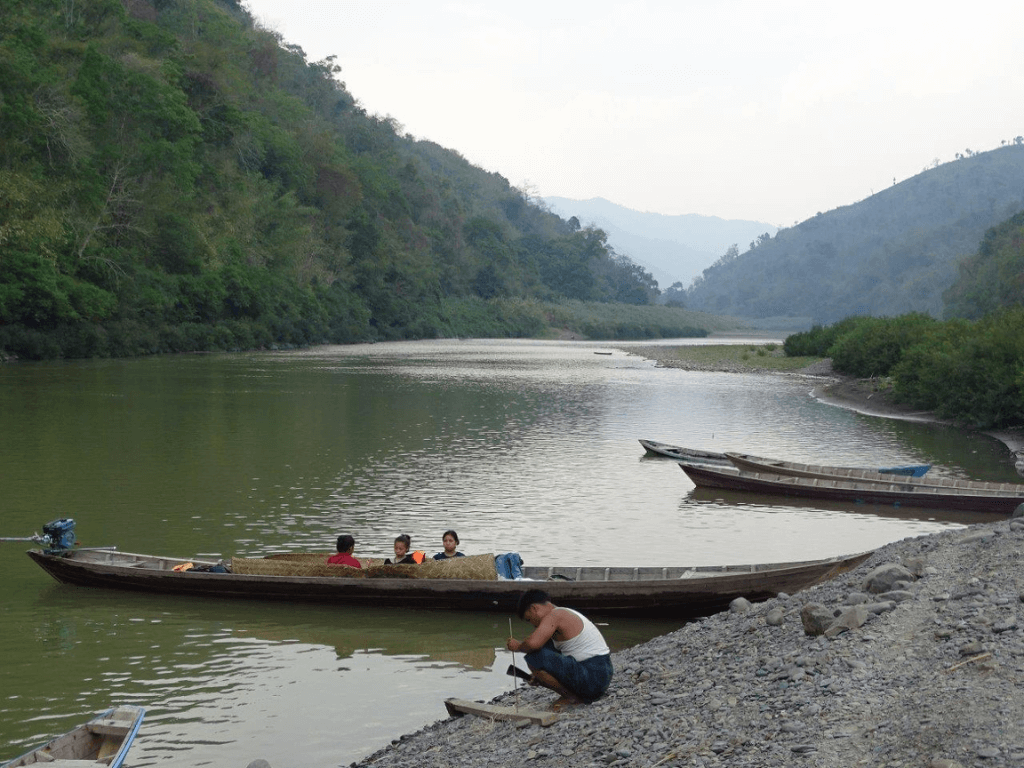
After a hearty breakfast, we took a leisurely walk through the village and watched the morning routines of its inhabitants. The time passed much too quickly, and we didn’t say goodbye to our hosts and depart until after 9 o’clock. After travelling for an hour, we crossed the border into Rakhine State, where the river became considerably broader and transformed into a large waterway. After a simple lunch of boiled rice and dried meat, we had to wait out a brief downpour before leaving the villages of Cho May and Sinkay behind us. We moored our boat in Mrauk Oo in the afternoon.
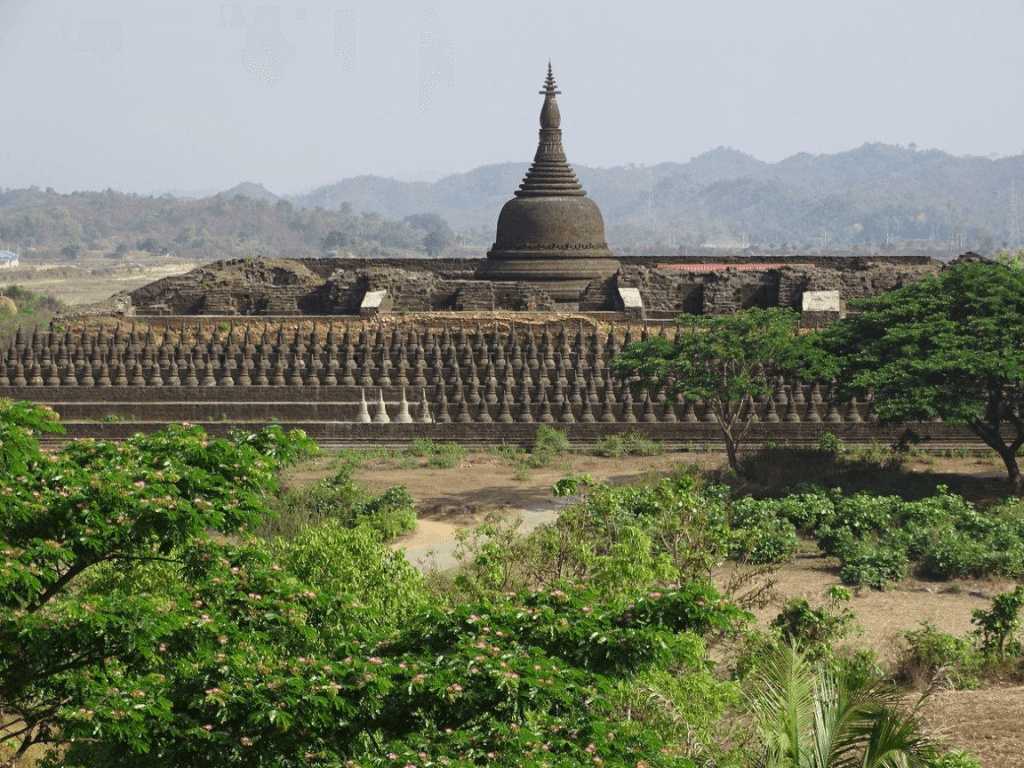
In the late afternoon, we found ourselves standing in the centre of Mrauk Oo on an elevated spot where we could see the mighty, fortress-like temple and pagodas, and felt ourselves fall under the spell of the stunning colours of the sunset.
